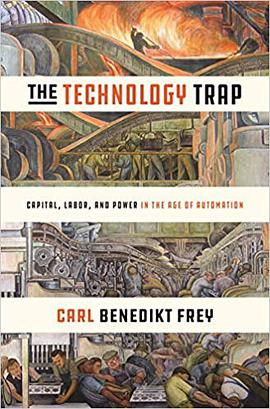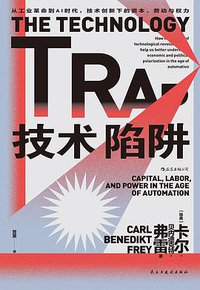
Capital, Labor, and Power in the Age of Automation
Carl Benedikt Frey
简介
How the history of technological revolutions can help us better understand economic and political polarization in the age of automation
From the Industrial Revolution to the age of artificial intelligence, The Technology Trap takes a sweeping look at the history of technological progress and how it has radically shifted the distribution of economic and political power among society’s members. As Carl Benedikt Frey shows, the Industrial Revolution created unprecedented wealth and prosperity over the long run, but the immediate consequences of mechanization were devastating for large swaths of the population. Middle-income jobs withered, wages stagnated, the labor share of income fell, profits surged, and economic inequality skyrocketed. These trends, Frey documents, broadly mirror those in our current age of automation, which began with the Computer Revolution.
Just as the Industrial Revolution eventually brought about extraordinary benefits for society, artificial intelligence systems have the potential to do the same. But Frey argues that this depends on how the short term is managed. In the nineteenth century, workers violently expressed their concerns over machines taking their jobs. The Luddite uprisings joined a long wave of machinery riots that swept across Europe and China. Today’s despairing middle class has not resorted to physical force, but their frustration has led to rising populism and the increasing fragmentation of society. As middle-class jobs continue to come under pressure, there’s no assurance that positive attitudes to technology will persist.
The Industrial Revolution was a defining moment in history, but few grasped its enormous consequences at the time. The Technology Trap demonstrates that in the midst of another technological revolution, the lessons of the past can help us to more effectively face the present.
contents
Preface ix
Introduction 1
Part I The Great Stagnation 29
1 A Brief History of Preindustrial Progress 33
2 Preindustrial Prosperity 60
3 Why Mechanization Failed 72
Part II The Great Divergence 93
4 The Factory Arrives 97
5 The Industrial Revolution and Its Discontents 112
Part III The Great Leveling 141
6 From Mass Production to Mass Flourishing 147
7 The Return of the Machinery Question 174
8 The Triumph of the Middle Class 189
Part IV The Grert Reversal 223
9 The Descent of the Middle Class 227
10 Forging Ahead, Drifting Apart 249
11 The Politics of Polarization 264
Part V The Future 297
12 Artificial Intelligence 301
13 The Road to Riches 342
Acknowledgments 367
Appendix 369
Notes 373
Bibliography 425
Index 453
